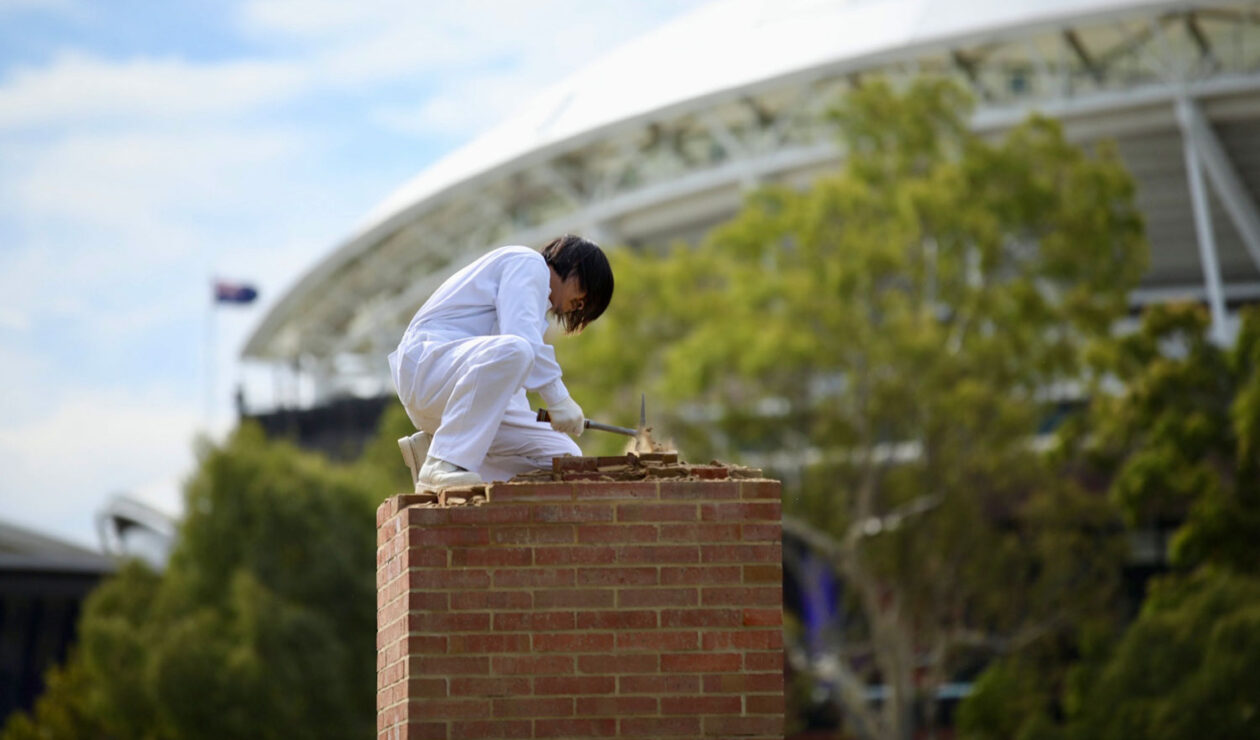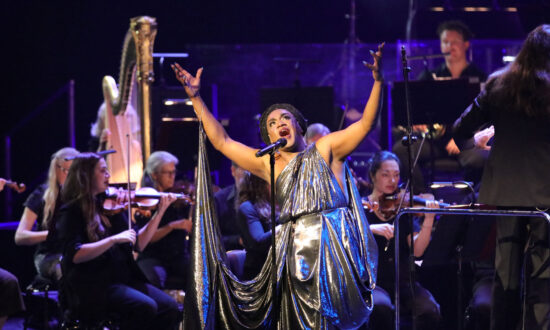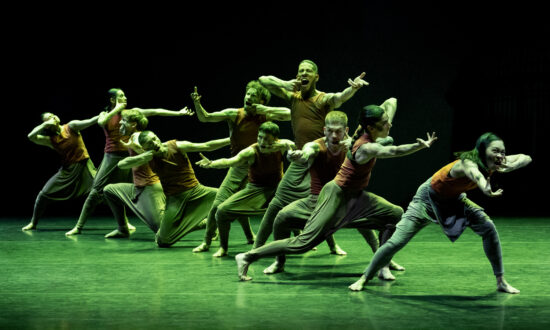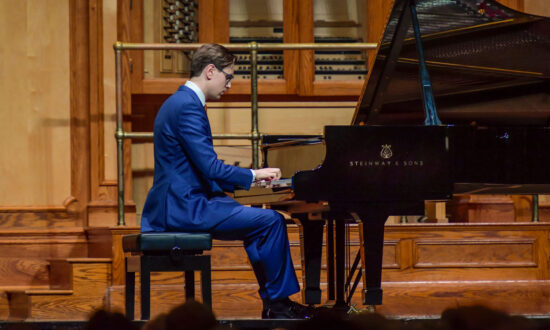Using her body as canvas, as statue and as barometre since 1973, Marina Abramović is one of history’s greatest performance artists. Known for pushing her body to its limits and engaging with time in a way that both elongates it and obliterates it, she is synonymous with the term durational art and is a wonderful sort of artworld rock star.
For this year’s Adelaide Festival, the artist and her Marina Abramović Institute (MIA) handpicked eight artists from Australia and Asia for Takeover, a four-day durational art experience.
To begin, Abramović is present on screen, telling viewers about the time she spent in Central Australia, meeting with and learning from the land’s Aboriginal people. She said to live in the heat of the desert (she is from Serbia), one must slow everything, from movement to heart rate, and this demands silence. Learning silence, she said, had been fundamental to her practice ever since.
Abramović then led us in exercises involving breathing, holding breath, looking at colours, making vowel and consonant sounds, and sitting in silence. Only then were we were ready to engage with the art of human experience. Only then were we ready to be present.
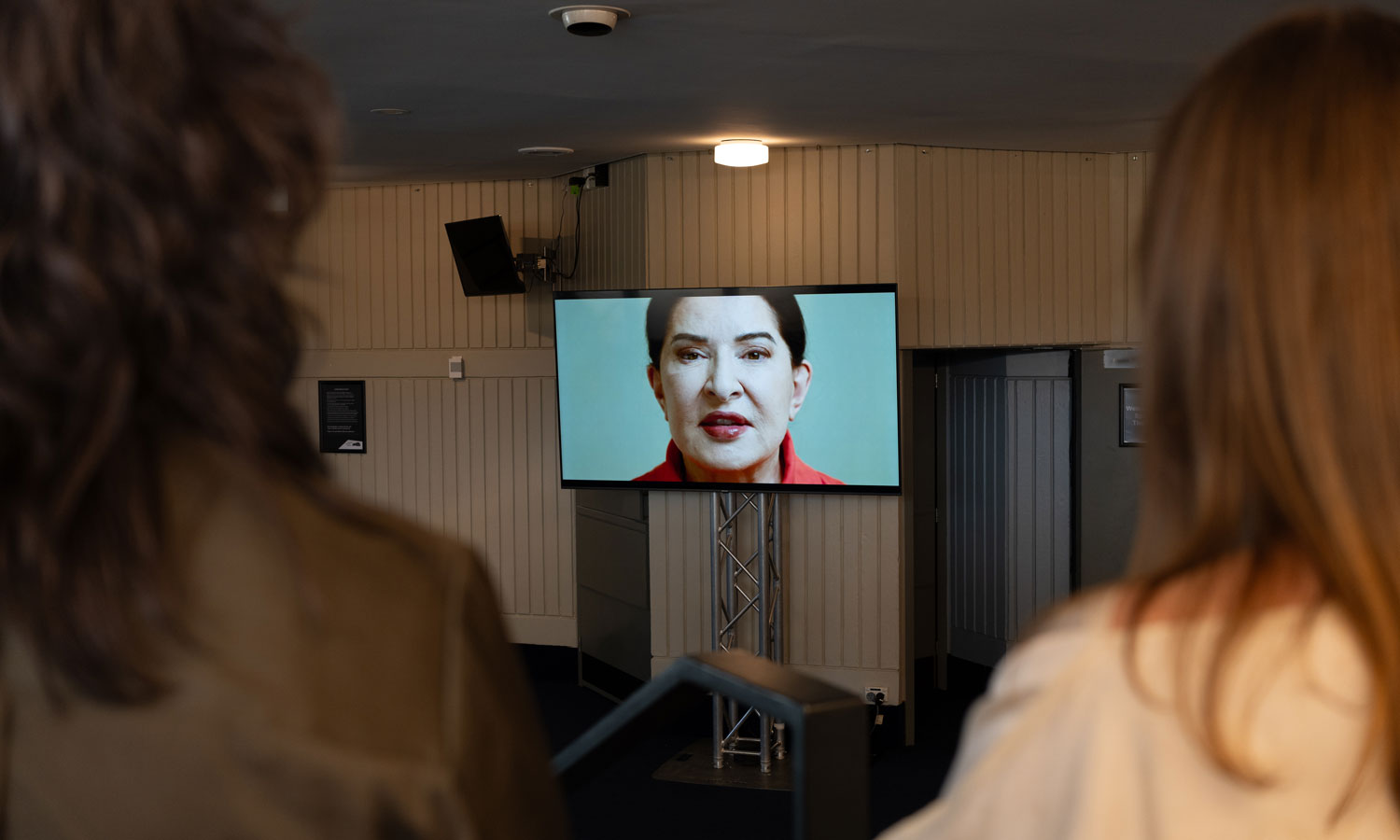
Marina Abramović addresses the Adelaide audience via video. Photo: Andrew Beveridge
Six of the eight artists showed up day after day to perform what some might think of as repetition and others might consider endurance. In response to the recent rejection of voice, Bidjara man Christian Thompson brought us Wait in Gold, in which he pinned tiny golden flowers to his black clothes until he was human flora, and then he unpinned them, and then pinned and unpinned them again, practising a now-you-see-him / now-you-don’t representation of racism, or erase-ism.
An anonymous artist from Collective Absentia sat in a chair with a thick black T-shirt draped over their head. The work, Our Glorious Past Our Glorious Present Our Glorious Future: Our Glorious Spring, is a meditation on non-violent actions as resistance in a time of extreme violence, dedicated to the countless who’ve died in the politically volatile country of Burma/Myanmar since 1948. Like Abramović’s 2010 The Artist is Present, in which she sat in front of countless art-goers at MoMA for eight hours a day over a three-month period, causing participants to smile, laugh, cry and give thanks, art viewers sat or stood opposite the unknown artist but neither participant could see the other.
Australian performance writer Indigo Perry brought us I will write you out of water, an extended work that began at another MAI occupation, in the Royal Theatre Carré Amsterdam in 2022. Still trying to write about her brother’s drowning three decades ago, Perry needs to “unwrite’ the story, which means she must avoid making sense of it, which she tries to do through the documentation of the art experience around her. She was near-spectral, walking quietly from room to room, writing and reciting and talking to participants about what had happened to her brother, essentially performing extended mourning.
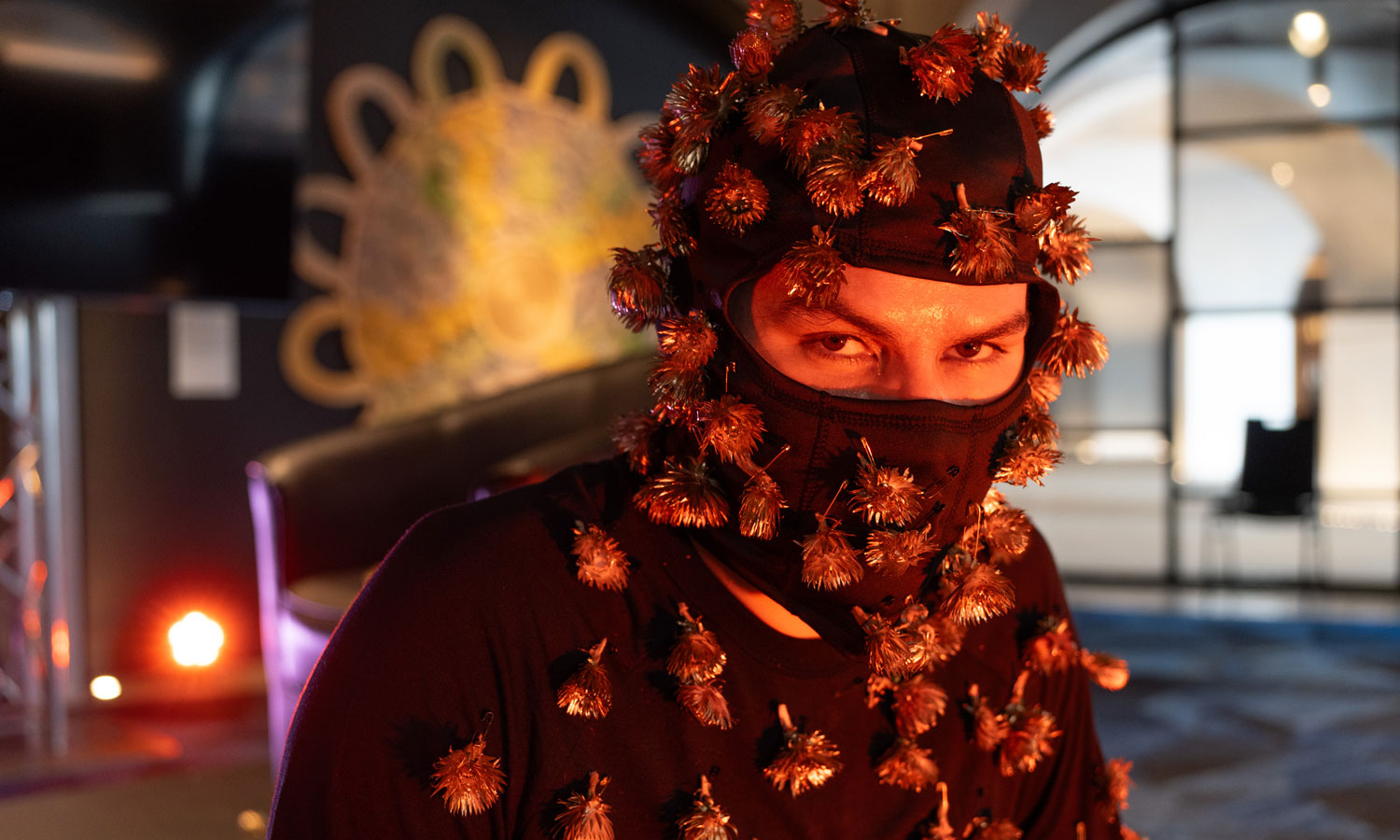
Christian Thompson becomes human flora with the work Wait in Gold. Photo: Andrew Beveridge
Indonesian Melati Suryodarmo sat at a chair before a desk and sewed a black shirt which, upon completion, she put on. She then stood up, picked up a piece of chalk and walked to a chalkboard, where she said “I am sorry” with each chicken scratch she made. After a few dozen had been counted, she took off the black shirt, placed it in a growing pile of them and returned to her sewing machine to do it all over again. She calls the work Amnesia, and whether it was guilt or sorrow that she carried in her body for the four days might just depend on what sort of individual emotional baggage each viewer / participant brought to the Space Theatre. Durational art is, after all, a collaborative experience where the artist and the witness create the moment.
Upstairs, violinist Eric Avery played notes derived from the DNA of Australian birds in Ngiyawaygunhanha, a work devised by Wiradjuri/Ngyiampaa artist SJ Norman in consultation with musician and molecular biologist Dr Mark Temple. The music changed as the day progressed, marking the various bird species’ “dreaming data”. The music was loud and looping, like a cacophony of birds celebrating sky.
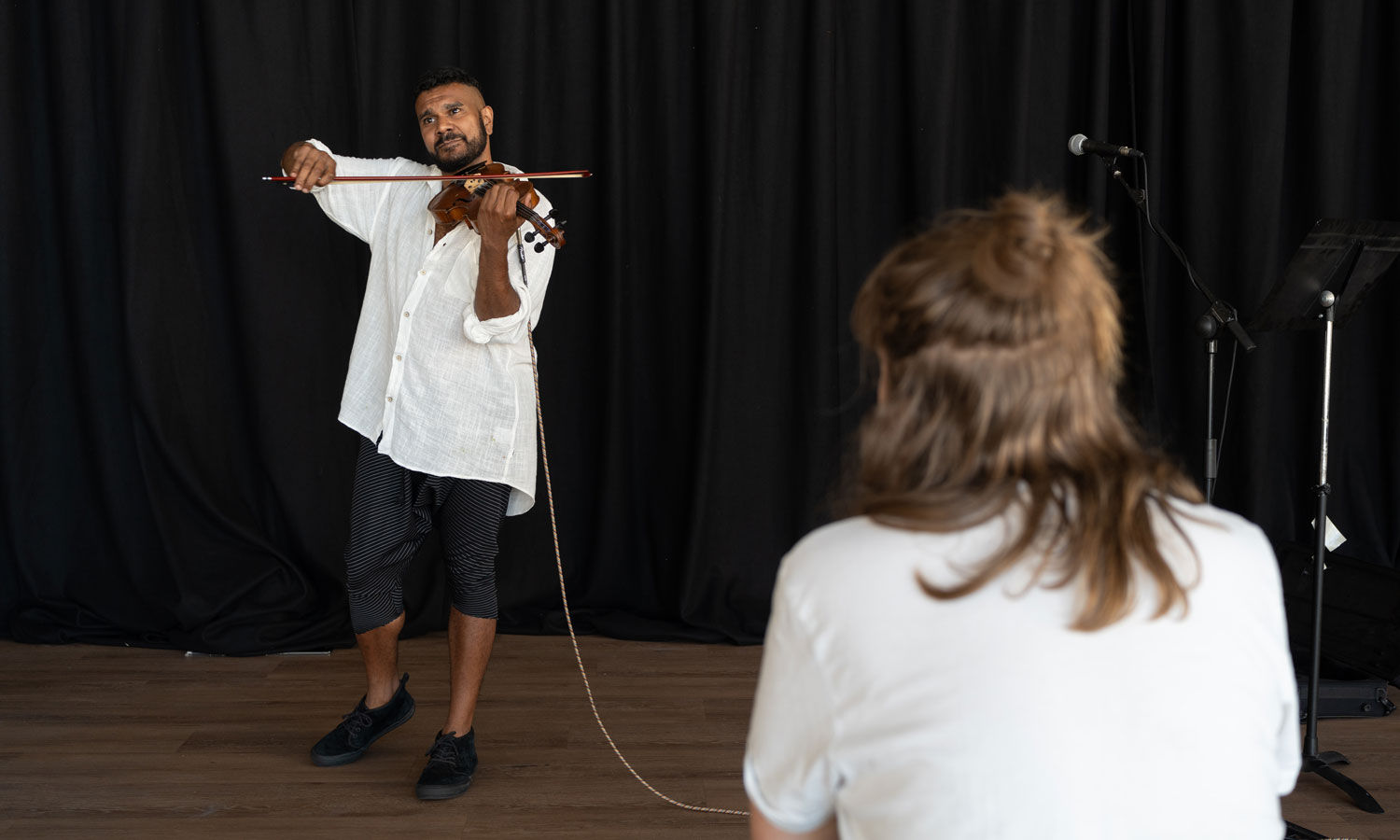
Violinist Eric Avery plays a work devised by artist SJ Norman. Photo: Andrew Beveridge
Because durational art is so intense and demands an elevated level of sobriety, Yingmei Duan’s Yingmei in Wonderland was a constant and flittering surprise. Traversing the Takeover space, not only did the Chinese artist break the mould by embodying different characters who changed completely throughout the day, but each character was playful and generous. One showed us what it was like to fly in her dreams while another walked naked, holding an ornate Asian vase in her hands and offering it to our ears, where we listened and heard traditional Chinese music. She was like an animated roving jester, though never a side-kick.
Two of the eight artists were present for only one day. Friday night showcased the celebrated Australian artist Mike Parr as he painted four enormous black squares, then painted over them in red, then painted over them again in black. In Portrait of Marina Abramović, Parr self-imposed blindness so that he could not see what he was doing and, indeed, will never see what he created. He did this for 12 hours, using only the one arm he was born with. He’s 79 years old. If art is made in a room and the artist never sees it, does it exist? The work could be viewed for the following three days, so yes, it did.
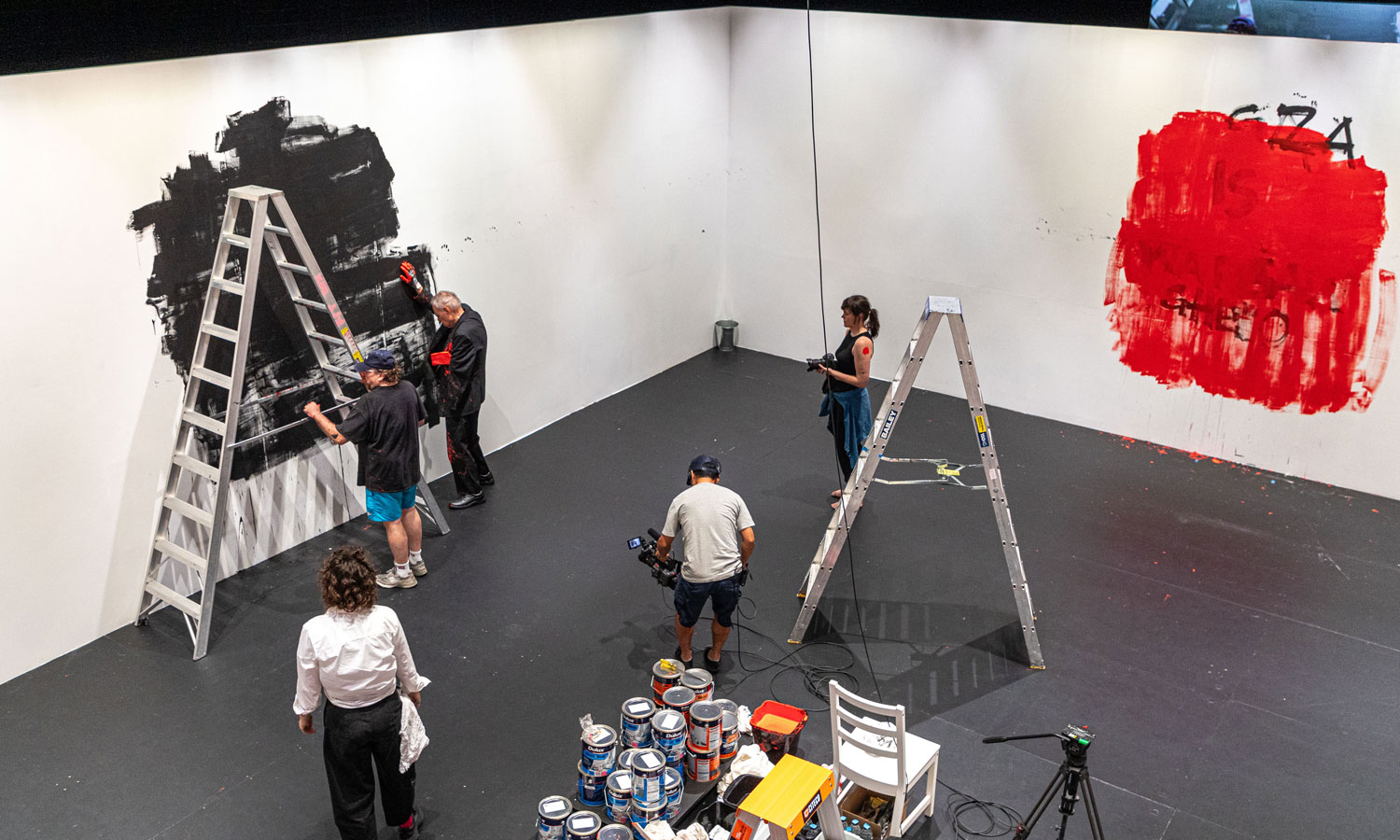
Mike Parr’s durational performance Portrait of Marina Abramović. Photo: Andrew Beveridge
Over the weekend, Li Binyuan, from China, perched atop a 4m brick pillar outside the Festival Centre in Linear Park and hammered away at the bricks until they fell. Harkening back to his training as a sculptor, Li’s body and the bricks were together the statue, both disintegrating in the persistent act of hammering. The work, Breakdown, was intended to begin at 4pm and end around midnight on Saturday, but took longer than expected, with Binyuan returning again on the Sunday*.

Get InReview in your inbox – free each Saturday. Local arts and culture – covered.
Thanks for signing up to the InReview newsletter.
Of all the artforms, durational is the most present. It creates itself in each millisecond and its immateriality cannot be destroyed. At the end of Abramović’s introductory video, she thanked us for our trust and participation. These are two of the most important things we can do as consumers of the artform and, in turn, as witnesses to and contributors of human experience. Ideally we took what we felt and learned from this important and transgressive happening and will go on to let it inform our ways of living through these hectic and often vicious times.
Marina Abramović Institute: Takeover was presented in the Space Theatre and surrounds at the Adelaide Festival Centre from March 1-4.
*Note, the copy regarding Breakdown has been amended since publication.
Read more 2024 Adelaide Festival coverage here.
Support local arts journalism
Your support will help us continue the important work of InReview in publishing free professional journalism that celebrates, interrogates and amplifies arts and culture in South Australia.
Donate Here
